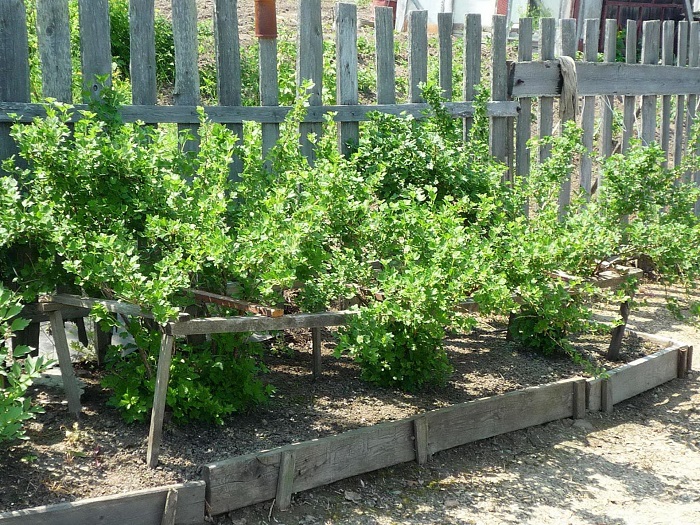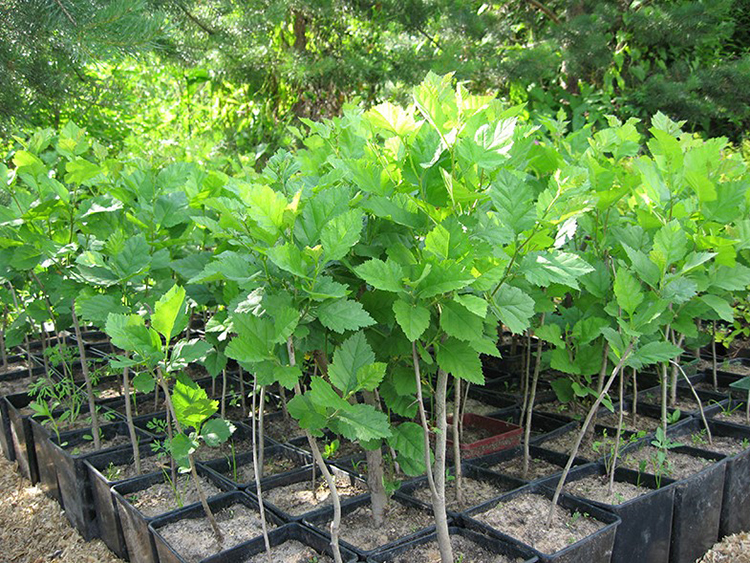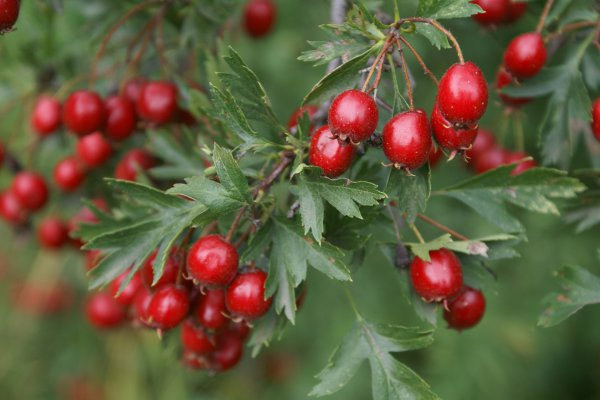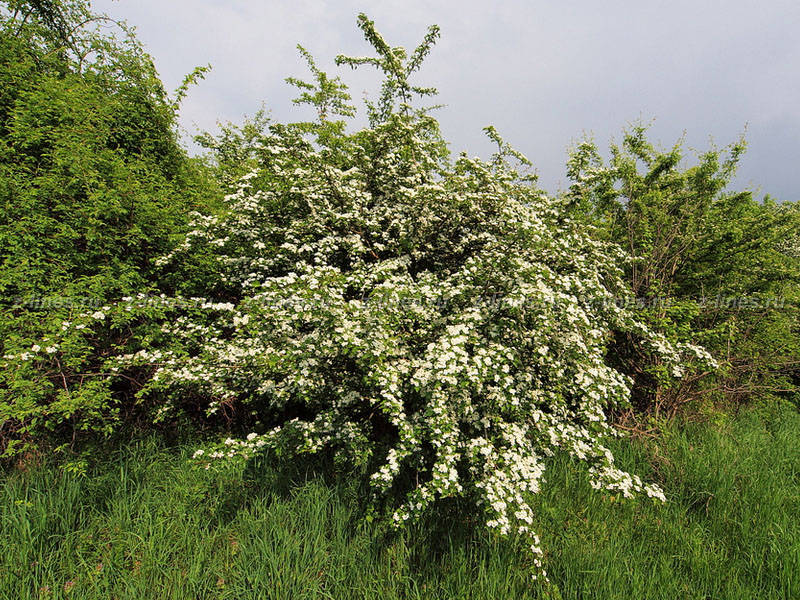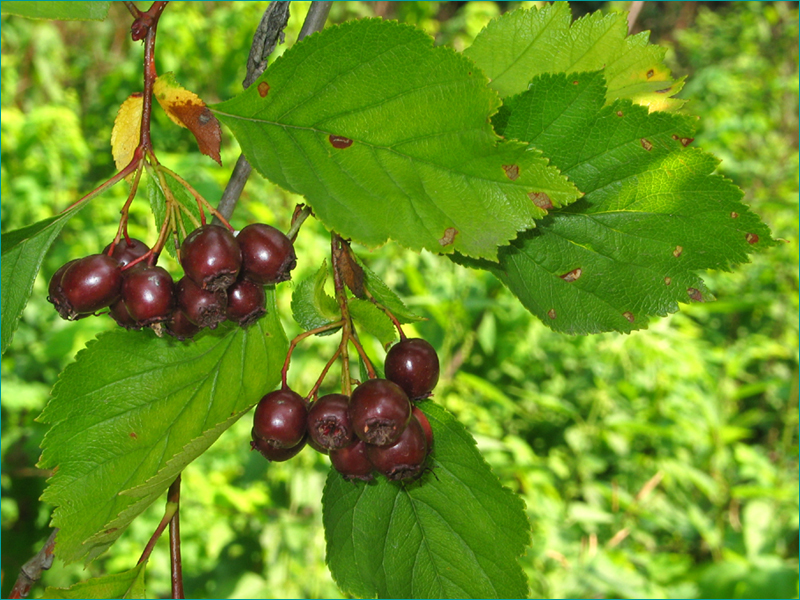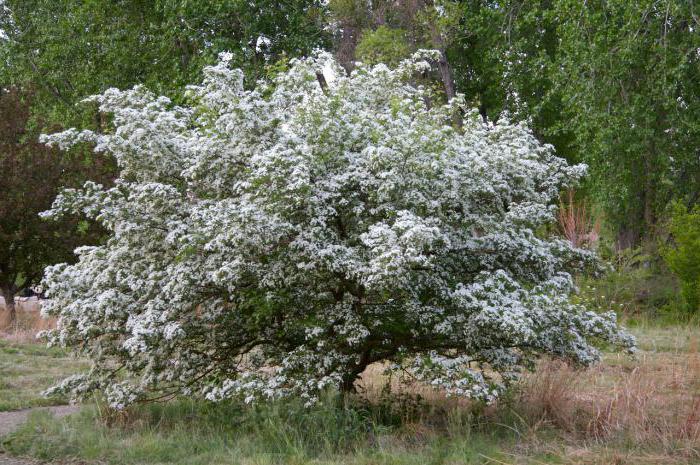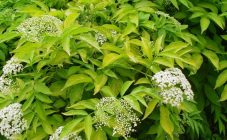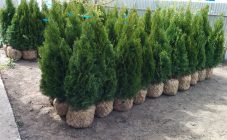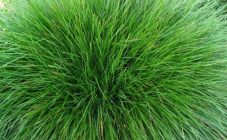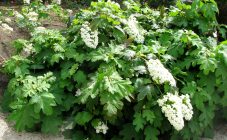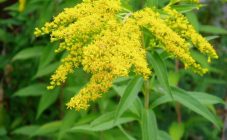Content:
Hawthorn belongs to deciduous semi-evergreen shrubs. In many European countries, especially England, hawthorn hedges are common. In this area of application, this plant has no equal. The shrub has a rather dense, naturally neat and incredibly beautiful crown - such a tree is ideal for creating green fences. In addition, the lush bloom and vibrant fruits of the hawthorn are a magnificent and unique decoration for any garden. At the same time, the plant is distinguished by good endurance and unpretentiousness in planting and caring for it.
General characteristics of the fruit tree
Hawthorn belongs to the garden shrubs of a fairly large size. In Russia, this tree is found in almost all regions, including in the Moscow region and in the Leningrad region.
His thorns are also very strong, in the old days they were used as nails. Since this part of the plant is the most noticeable and species-determining, hawthorn is often called simply a thorn.
It is noteworthy that even in the absence of special care for the formation of the crown, the plant always looks strict and neat.
The hawthorn can reach a height of seven meters, and in the garden - no more than three meters.
- The shoots are brown or dark red, the number of thorns on which can vary greatly depending on which species and variety the tree belongs to.
- The graceful leaves of the hawthorn, dark green in summer and reddish-orange in autumn, can be either whole or split.
- Shrub thorns are modified shoots. At the beginning of their growth, they are very small, and there are tiny leaves on them. After they fall, the thorns change color and become stronger.
The maximum length of thorns is recorded in North American representatives of the genus Crataegus and is 12 centimeters. While in European shrubs, they are completely absent or their size does not exceed 2-3 centimeters. Large, sharp thorns significantly complicate tree care and require great care when you are close to it - thorns can pierce even thick shoes.
The time when the shrubs begin to bloom falls in May - June. White or pink flowers make up corymbose inflorescences. It is they who give the bushes such a magnificent look. The genus of shrubs also includes varieties of double-flowered hawthorn. All shrubs are characterized by beautiful stamens and anthers, which together give a spectacular dense flowering.
After the tree has bloomed, beautiful and edible fruits appear on it, but this does not always happen. It also happens that for the entire season the bush does not bear fruit at all. They can stay on branches for more than two months. The color of the berries ranges from orange-red and yellow to black and purple. The fruit contains five seeds, which are located at the top.The size of the berries ranges from 3-5 mm to 3 cm. The fruiting period of hawthorn begins at the age of 8-10 years.
Popular varieties
The shrub genus includes a wide variety of species, the number of which exceeds one thousand. They are distributed exclusively in the northern hemisphere, in zones with a temperate and partly subtropical climate. Types of fruit trees can differ significantly from each other, while some varieties, on the contrary, are so similar that it is almost impossible to distinguish them from each other.
To simplify recognition, in landscape design, bushes are divided into two large groups - North American and Eurasian. The former are characterized by whole or slightly dissected leaves, as well as very long, strong spines. In the latter, the leaves have deep lobes, and the thorns are very small or absent in principle. North American representatives of the genus Crataegus are more decorative and more promising.
Hawthorn
One of the most common types of shrub is the common hawthorn, or thorny. Due to its widespread distribution, resistance to wind, cold and drought, the tree is considered one of the best garden shrubs.
This species offers a wide range of varieties. Among the most popular is the Paul Scarlet variety, which is distinguished by a terry covering of flowers of a pale pink hue. An even more common variety of hawthorn is the white-pink Bicolor, as well as the Pauli variety, which features deep red fruits.
Hawthorn blood red
Alternative name - Bloody hawthorn. Differs in incredibly beautiful flowering. It has rather large, few spines. The flowers are white, the anthers are purple.
The fruits, located on thin twigs, glow on the crown with a scarlet fire, which, in turn, is effectively distinguished by its brown color and slightly dissected leaves of an elegant appearance.
Hawthorn softish
This hawthorn is also called "soft" or "semi-soft". One of the best representatives of its kind, belonging to the North American group.
Its fruits are not only edible, but also very tasty, juicy and healthy. The spines are thin, the lush crown has a very neat rounded shape, the whole, dark green leaves of which turn into deep red in the fall. This is a brief description of the soft hawthorn.
Hawthorn
Also known as pink terry hawthorn. It belongs to the most popular types of shrubs. The average height of the tree is two meters. The crown is very dense, easily tolerates pruning.
The peak of flowering occurs in late May - early June. The flowers are white and pink. The faded red hawthorn fruits are used in medicine, as they have effective healing properties. This variety boasts a wide variety of decorative and hybrid forms with pink and other blooms.
Among the first are:
- red terry;
- crimson;
- weeping;
- pyramidal pink.
Hawthorn green-meat
It has a dense, dense crown, and in this it is in no way inferior to the semi-soft hawthorn. The branches of the bush are planted with short thorns. The tree is adorned with snow-white inflorescences and pitch-black berries. The shoots are purple, the bark is gray, the leaves are ovoid, slightly dissected.
Flowers sit on dense shields, stamens flaunt with dark anthers, which distinguishes this highly decorative variety against the background of other representatives of the genus.
Hawthorn daurian
It has a magnificent decorative look that attracts the eye. Small leaves, round and compact crown make this type of shrub especially graceful.
The tree is rather low, has reddish shoots, equipped with small thorns. The branches are adorned with elongated diamond-shaped leaves with deep lobes. The flowers are white, the anthers have a purple hue, which gives the tree a delicate romantic look.
Hawthorn pinnate
A very original, highly decorative look that is perfect for both single parties and hedges. The crown of the bush is very spreading, has a dark gray color. On the shoots are rare spines, as well as rather small, but very bright pinnately dissected (hence the name of the species) leaves.
There are warts on the fruits. The bush looks unusually impressive and picturesque.
Hawthorn
It has the largest thorns, making it an ideal contender for a green hedge. The spines can be up to twelve centimeters long.
The lush crown goes well with the light gray bark. The branches are adorned with lightly split, dark green leaves, which are known for their extraordinarily spectacular fall outfit. It is noteworthy that they persist on the branches for a rather long time - much longer than in other species. The fruits of this shrub are very large, the pulp is dryish of average taste.
Hawthorn lavalieri
It is especially popular, and the most famous variety of this species is Carrierei, which is often confused with a separate variety of hawthorn. The peak flowering of Lavalieri begins in May, and the bright orange fruits with a scarlet tint give the shrub a surprisingly beautiful, elegant look.
Hawthorn mordensky
It belongs to the number of controversial hybrids. In Russia, this type of shrub is very popular. The tree is decorated with double flowers that change their pink color to white. There are practically no spines on the branches. The hybrid does not have fruits, but this deficiency is more than compensated for by a lush, mesmerizing flowering.
Other varieties
Among the most popular varieties of hawthorn are the following:
- Douglas hawthorn - has a lush crown, shoots are devoid of thorns, leaves are separated by lobes, flowers sit on inflorescence shields, fruits are purple-black, tolerate shade well.
- The Wattiana hawthorn is a densely crowned shrub that is 6-8 meters high. The spines on the shoots are rare, the foliage is bluish, the shields have a complex structure and consist of white inflorescences. Hawthorn fruits are yellow, spherical in shape.
- Maksimovich's hawthorn is distinguished by large red fruits, gray-brown shoots devoid of thorns, ovoid leaves and large fruits painted in a deep red color.
- Fan-shaped hawthorn - curved spines are located on upright shoots, the leaves are folded in a fan, have an ovoid shape and serrated edges. The flowers of this species are completely white, the fruits are colored bright red.
- Hawthorn pear - grows in the southern regions, therefore it is characterized by low resistance to cold, characteristic of the middle lane. The main distinguishing feature of this variety is the extraordinary shape of the leaves, similar to viburnum. The spines on the shoots are straight, reaching a height of five centimeters. The fruits are red, 50 mm in diameter.
- Crataegus x prunifolia or hawthorn, the following description: a short tree with a wide crown and decorative elliptical leaves.
The following types of shrubs are also very popular:
- hawthorn splendens;
- hawthorn spur or rooster's spur;
- hawthorn species Chinese;
- hawthorn species Small-leaved;
- round-leaved hawthorn;
- large-fruited hawthorn;
- hawthorn pontic;
- black hawthorn;
- decorative pink hawthorn.
Use in ornamental gardening
From the point of view of decorative value, the shrub is used as:
- fruit tree with beautiful berries;
- deciduous tree with amazingly beautiful crown;
- a plant that has excellent flowering.
Hawthorn can take many forms:
- shrubs;
- tree-like;
- standard.
As a design element, a shrub is used:
- like an impenetrable green hedge;
- in the underbrush;
- on the edges;
- build alleys;
- as a background shrub;
- for a landscape view;
- for a haircut;
- to decorate the garden area;
- for the background of flower beds;
- for creating screens and disguises.
Planting hawthorn
The shrub can be planted both in spring and in autumn when it reaches the age of two.
The interval between landings is observed:
- from one to two meters (for decorative purposes);
- from fifteen to fifty centimeters (as a building material for a hedge).
Landing pits are prepared in advance. The depth and width of those should be 70 cm. The extracted soil is replaced with a substrate with fertilizers, humus, sand, peat and compost. The soil must be alkaline; for this, lime is added to it. A drainage layer is laid at the bottom of the pit, consisting of small particles of brick and crushed stone. Before planting, the pit is filled with the required amount of water.
Saplings are pruned if trees are planted to create a hedge. Pruning is carried out to a height of 10-15 cm, thereby ensuring the future growth of skeletal shoots.
The hawthorn is planted in the standard way: the plants are placed in the ground so that the root collar is flush with the ground. At the end of the event, the soil is watered with plenty of water and mulched.
The genus Hawthorn includes a huge variety of all kinds of species that are very different from each other. Gardeners are provided with a large selection of shrubs for growing and breeding in their area. Among the many varieties, everyone can find the most suitable one for themselves.

